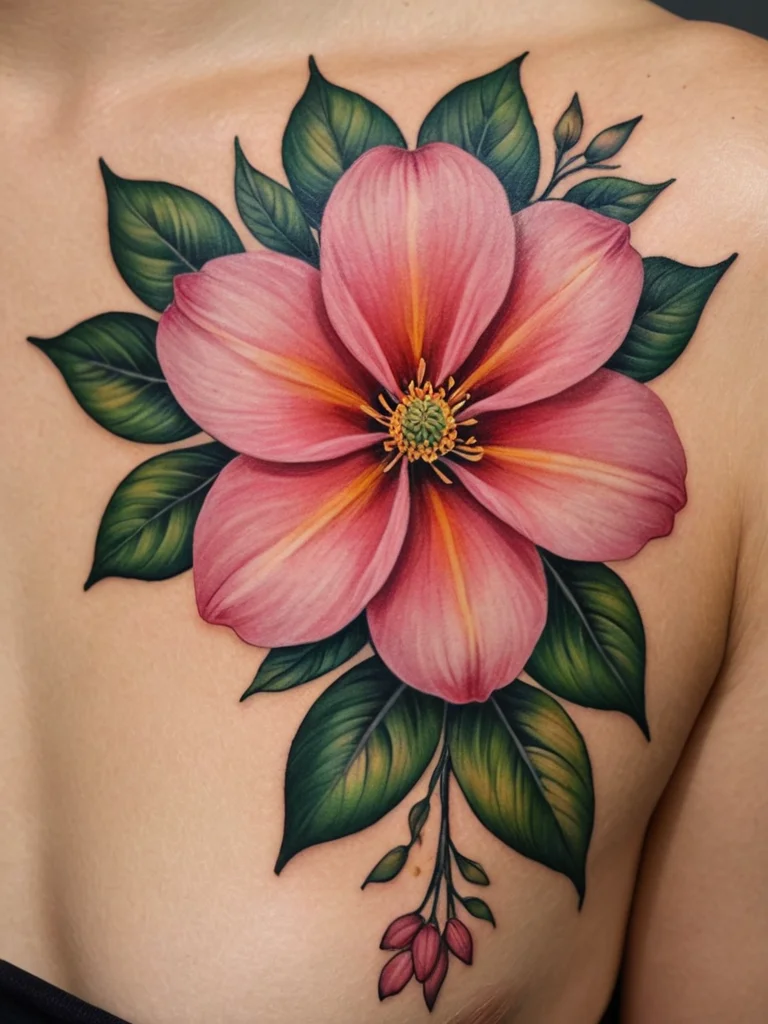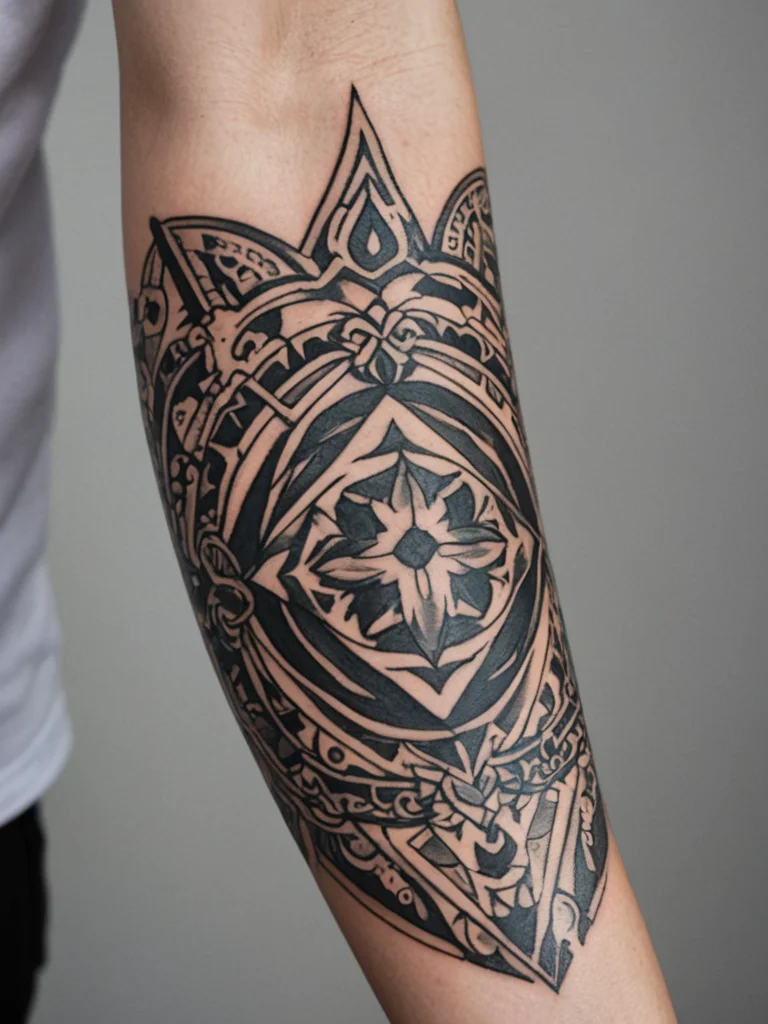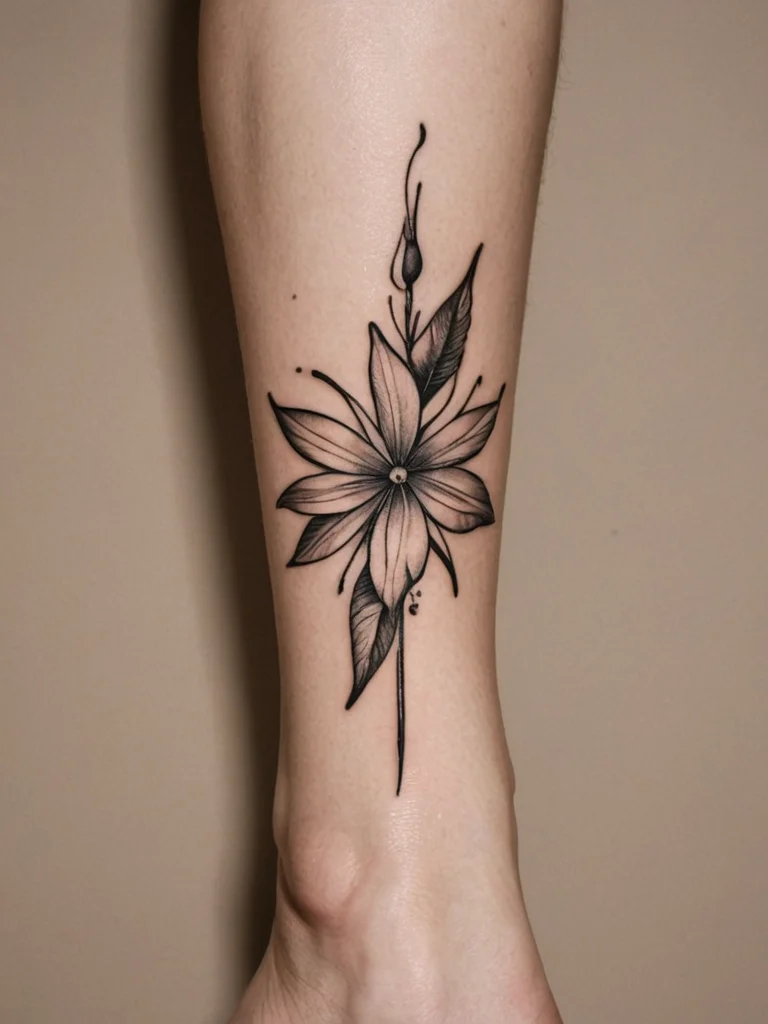Tattoos are deeply personal forms of self-expression, carrying stories, memories, and symbols that resonate with the individual. For many, getting inked is a transformative experience, a powerful statement of identity that they cherish for a lifetime. However, it’s a reality in the tattoo world that not every piece results in lifelong satisfaction. Tattoo regret, a feeling of dissatisfaction or remorse over a permanent modification to one’s body, can cast a shadow on what should be a source of pride. Understanding the psychological underpinnings of why people regret tattoos, and more importantly, how to sidestep this common pitfall, is crucial for anyone considering this art form. This article delves into the intricate relationship between our minds, our decisions, and the ink that adorns us, offering guidance from an expert perspective to help you make choices you’ll love forever.
Understanding tattoo regret: why it happens and who it affects
Tattoo regret is a complex emotional and psychological phenomenon. It’s not simply about disliking the aesthetic of a tattoo; it often stems from a deeper disconnect between the person you were when you got the tattoo and the person you have become. Historically, tattoos have served various purposes across cultures, from marking social status and tribal affiliation to signifying rites of passage or personal beliefs. In contemporary Western society, tattoos have largely shifted towards individualistic expression, often tied to personal milestones, artistic appreciation, or simply the desire for adornment. However, the permanence of ink means that a decision made in one phase of life might not align with your future self. Common reasons for regret include:
- Impulse decisions: Getting tattooed impulsively, perhaps under the influence of alcohol or peer pressure, without adequate thought.
- Shifting life circumstances: Major life changes, such as new relationships, career shifts, or a change in personal beliefs, can make a tattoo that once felt meaningful now feel out of place.
- Poor execution: A tattoo that is poorly designed, poorly executed by the artist, or fades unevenly can lead to significant dissatisfaction.
- Misunderstood symbolism: Choosing a symbol without fully understanding its meaning or cultural implications can lead to unforeseen associations.
- Changing trends: While less common as a sole reason for deep regret, a tattoo that was trendy at one time might feel dated later on.
- Body image changes: Significant weight fluctuations or other changes to one’s body can alter how a tattoo sits or looks, sometimes leading to regret.
Certain demographics might be more prone to specific types of regret. Younger individuals, for instance, might experience regret as their personalities and tastes evolve rapidly. Those who get tattoos in sensitive or highly visible areas may also feel the impact of regret more acutely, especially if it affects professional or social perceptions. It’s also observed that individuals who don’t fully engage with the decision-making process or feel pressured into a tattoo are more likely to develop feelings of remorse. Understanding these contributing factors is the first step toward making informed choices.
The psychological roots of tattoo decisions: impulse vs. intention

The psychological drivers behind getting a tattoo are as varied as the designs themselves. At one end of the spectrum lies the impulsive tattoo – a decision often driven by immediate gratification, social influence, or a fleeting emotional state. The thrill of novelty, a desire to fit in, or a spontaneous reaction to a life event can all fuel an impulsive ink choice. These decisions bypass the critical evaluation stage, leading to a disconnect between the action and deeper personal values or long-term desires. The brain’s reward system, particularly the dopamine rush associated with novelty and excitement, can play a significant role here. You might feel a powerful urge, a sudden certainty that this is what you want, without the reasoned deliberation that usually guides permanent decisions.
Conversely, intentional tattooing is rooted in thoughtful consideration, personal narrative, and a clear vision. This approach involves introspection, research, and a deep understanding of why a particular design or placement is meaningful. Intentional tattoos often become cherished elements of identity, symbols of resilience, remembrance, or personal philosophy. The psychological benefit here is profound; the tattoo serves as a constant reminder of a core value, a significant achievement, or a deeply held belief. When you get a tattoo with intention, you are not just decorating your body; you are consciously integrating a piece of your inner world into your external presentation. This alignment between intent and outcome is a powerful buffer against regret. It’s about making a conscious choice that resonates with your authentic self, ensuring that the ink tells a story you are proud to carry, rather than one you wish to hide.
Pre-tattoo checklist: key questions to ask yourself to prevent future regret

To navigate the path to a tattoo you’ll love, a rigorous self-assessment is paramount. Think of this as a vital pre-flight check for your body art journey. Before you even step into a studio, engaging with a series of probing questions can save you from potential disappointment down the line. Tattoo artists consistently recommend that their clients take their time, and this checklist is designed to facilitate that crucial deliberation.
- Why do I want this tattoo? Go beyond superficial reasons. Is it a spontaneous whim, a response to peer pressure, or a deep-seated desire to express something significant about yourself? Understanding your core motivation is key.
- What does this symbol/design truly mean to me? If it’s a specific symbol, research its origins and common interpretations. Ensure its meaning aligns with your personal values, not just its aesthetic appeal.
- Will this meaning remain relevant as I grow and change? Consider your life trajectory. Will this symbol still hold significance five, ten, or twenty years from now? Opt for timeless themes or personal meanings that are less likely to fade.
- Where on my body do I want this tattoo? Think about visibility and how it might impact your professional life or social interactions. Consider how the placement complements your body’s natural contours and how it might age.
- Am I prepared for the permanence? Tattoos are permanent. Laser removal is an option, but it’s costly, painful, and not always 100% effective. Truly internalize the commitment.
- Is this the right time in my life? Are you in a stable emotional and financial place to make this decision? Avoid getting tattooed during periods of significant stress, emotional turmoil, or major life transitions where your identity might be in flux.
- Have I researched artists and styles thoroughly? Look at portfolios, read reviews, and ensure the artist’s style matches your vision for the tattoo.
- Can I afford the best artist for this design? Quality tattoos are an investment. Don’t compromise on skill or hygiene due to budget constraints; it’s a false economy that often leads to regret.
Answering these questions honestly and thoroughly provides a solid foundation for making a decision you can feel confident about. It shifts the focus from a simple aesthetic choice to a meaningful act of self-definition.
Navigating the tattoo process: what to discuss with your artist for a perfect match
Once you’ve completed your self-reflection and have a solid concept, the next crucial step is partnering with the right tattoo artist. A skilled artist is not just a technician; they are a collaborator, an interpreter of your vision, and a guardian of your future satisfaction. Effective communication with your chosen artist is paramount to ensuring the final piece is a true reflection of your desires and will stand the test of time.
- Share your vision clearly: Bring reference images, sketches, or detailed descriptions of what you want. Explain the meaning behind the design, if any, and what emotions or ideas it should evoke. Don’t be afraid to be detailed; the more the artist understands your intent, the better they can bring it to life.
- Discuss placement and size in detail: Work with the artist to determine the optimal placement and size for your tattoo. They can advise on how a design will flow with your body’s anatomy, how it will look from different angles, and how it might stretch or distort over time due to movement or natural body changes. Consider how easily it can be covered if needed for professional reasons.
- Understand the artist’s style: Ensure the artist you choose specializes in the style you desire (e.g., realism, watercolor, traditional, geometric). A mismatch in style can lead to disappointment. If you love a realism artist, don’t ask them to do a bold traditional piece, and vice versa.
- Be open to artistic input: While your vision is important, a talented artist can often enhance a design with their expertise. Be open to suggestions regarding line weight, color palette, shading, or composition. They might see possibilities you haven’t considered.
- Clarify the process and aftercare: Understand how many sessions might be needed, what the pain levels might be like for the chosen placement, and, critically, how to care for your new tattoo during the healing process. Proper aftercare is essential for the longevity and appearance of your ink.
- Discuss any potential concerns: If you have any skin sensitivities, allergies, or previous tattoo experiences that didn’t go well, communicate these to your artist. This helps them take necessary precautions.
A good artist will engage in this dialogue enthusiastically, asking questions and offering insights. This collaborative process builds trust and ensures that the tattoo you receive is not just ink on skin, but a piece of art that you and your artist are proud of, minimizing the chances of future regret.
Beyond regret: embracing your ink or exploring removal options

For many, the journey with their tattoo is one of ongoing appreciation and integration into their personal narrative. When a tattoo is chosen with intention, executed skillfully, and cared for properly, it becomes a beloved part of the self. It can serve as a powerful reminder of personal growth, a celebration of significant relationships, a tribute to cherished memories, or simply a beautiful piece of art that enhances your sense of self. Embracing your ink means seeing it not just as a mark on your skin, but as a chapter in your life story, a testament to your journey, and an expression of your evolving identity. Tattoo artists often see clients who have tattoos that represent different eras of their lives, and each piece, when deeply considered, can be a valid and cherished part of who they are.
However, for those who do experience tattoo regret, it’s important to remember that it is not necessarily a permanent state of unhappiness. The field of tattoo removal has advanced significantly. Laser tattoo removal is the most common and effective method. It works by breaking down the ink particles into smaller fragments that the body can then naturally eliminate. This process typically requires multiple sessions, and the number of sessions depends on factors like the age, size, color, and depth of the tattoo, as well as your skin type and the laser technology used. While laser removal can be effective, it’s important to manage expectations: it can be painful, costly, and may not result in completely clear skin, sometimes leaving a faint ghosting or scar. Another option is tattoo revision or cover-up, where a skilled artist works on top of the existing tattoo to transform it into something new that you love. This requires careful planning and a highly talented artist who specializes in cover-ups, as the success depends on blending the old ink with the new design effectively.
Ultimately, whether you choose to embrace your ink, revise it, or explore removal, the key is to approach these decisions with the same thoughtfulness and intention you would apply to getting the tattoo in the first place. Learning from past experiences, whether they led to satisfaction or regret, is part of the human experience. By understanding the psychology behind our choices and engaging in a thorough, deliberate process, you can significantly increase the likelihood of creating a tattoo journey that is fulfilling and leaves you with art you truly cherish.